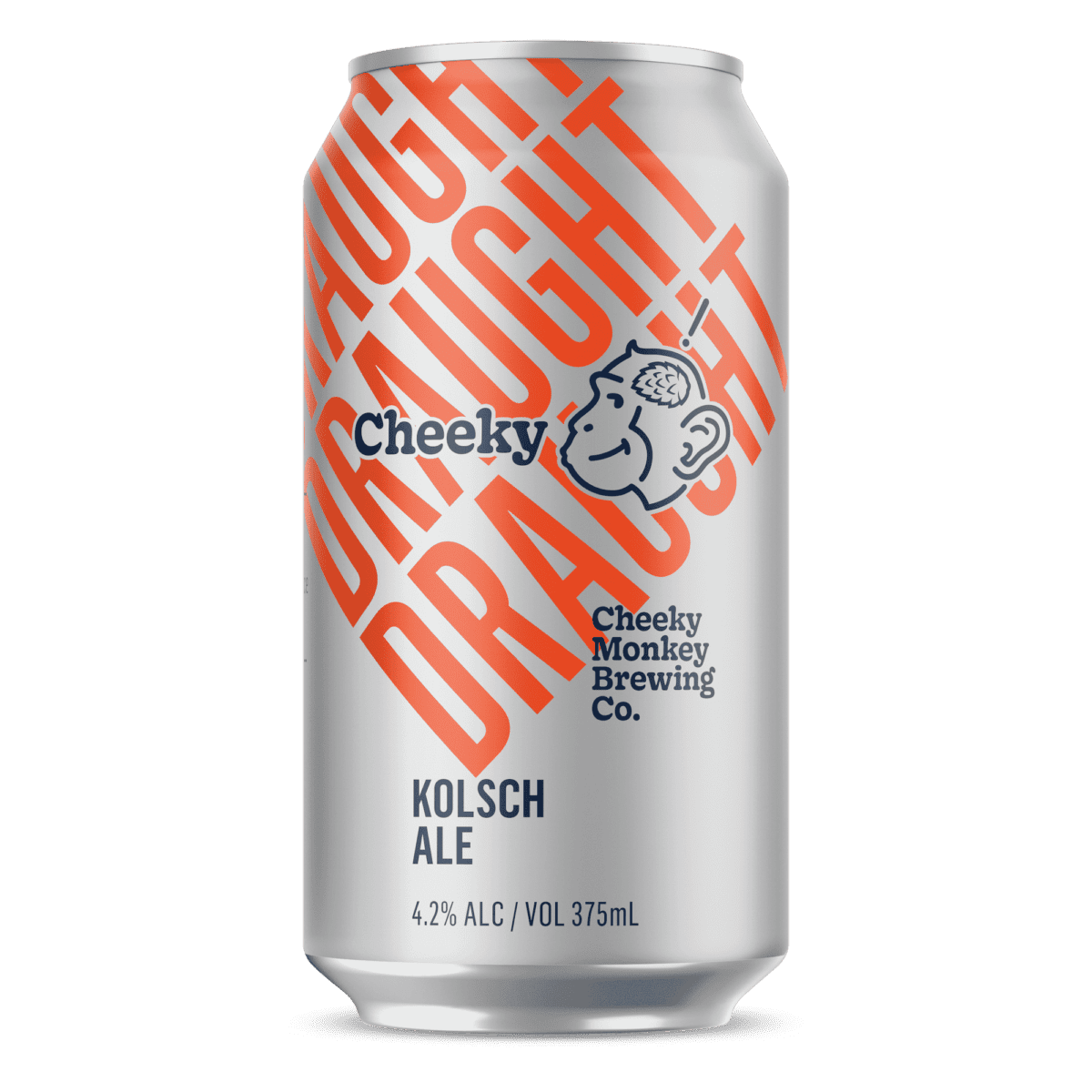Beer Education
The Craft of Draught Beer: A Guide to Brewing, Serving, and Enjoying
Table of Contents
Welcome to the world of draught beer, where craftsmanship and love for the brew are poured into every glass. In this guide, we will take you on a captivating journey through the art of brewing, serving, and savouring draught beer.

Whether you’re an aspiring homebrewer, a seasoned taproom enthusiast, or simply someone who enjoys the crisp and refreshing taste of a perfectly poured pint, this article is for you. We’ll delve into the intricate process of brewing, exploring the malt, hops, yeast, and water that come together to create unique and flavourful brews.
But our exploration doesn’t end at the brewery. We’ll also guide you through the proper techniques of serving draught beer, ensuring you get the most out of each pour. From selecting the right glassware to pouring with precision, you’ll learn how to create a sensory experience that enhances the flavours and aromas of the beer.
So whether you’re an ale aficionado or a lager lover, join us on this enlightening journey into the craft of draught beer. Get ready to elevate your beer-drinking experience to new heights. Cheers!
The history of draught beer
Draught beer has a rich and fascinating history that spans centuries. From its origins in ancient civilizations to its modern-day popularity, draught beer has evolved and captivated beer enthusiasts around the world.
In ancient Mesopotamia, people were brewing beer as early as 4000 BCE. The Sumerians, considered the first civilization to brew beer, used barley as the main ingredient. They even had a goddess of beer, Ninkasi, whom they worshipped and celebrated with festivals.
During the Middle Ages in Europe, monasteries played a significant role in brewing beer. Monks brewed beer for sustenance during times of fasting and as a safe alternative to contaminated water. They developed brewing techniques and passed on their knowledge, contributing to the growth and refinement of brewing practices.
The invention of the beer tap in the 18th century revolutionized the way beer was served. It allowed for the efficient dispensing of beer directly from the barrel, providing a fresher and more flavourful drinking experience. This innovation laid the foundation for the modern draught beer systems we see today.
The difference between draught beer and bottled beer
While both draught beer and bottled beer share the same key ingredients of malt, hops, yeast, and water, there are distinct differences between the two. These differences contribute to variations in taste, aroma, and mouthfeel, making draught beer a unique and sought-after experience.
One of the main differences lies in the carbonation levels. Draught beer is typically less carbonated compared to bottled beer. This lower carbonation creates a smoother and creamier mouthfeel, allowing the flavours of the beer to shine through. Bottled beer, on the other hand, tends to have higher carbonation levels, resulting in a more fizzy and effervescent experience.
Another difference is in the serving temperature. Draught beer is often served at a slightly higher temperature than bottled beer. This warmer serving temperature enhances the beer’s aromas and flavours, allowing for a more nuanced and enjoyable drinking experience. Bottled beer is usually served colder to provide a refreshing and crisp sensation.
Lastly, the serving method sets draught beer apart from bottled beer. Draught beer is served directly from a keg or cask, ensuring a fresh and unadulterated taste. Bottled beer undergoes additional processes such as pasteurization and filtration, which may alter the beer’s characteristics and flavours.
Understanding these differences allows beer enthusiasts to appreciate and enjoy both draught and bottled beer for their unique qualities.
Cheeky Monkey Draught
A Cheeky Draught Kolsch AleBright & Crispy, naturally carbonated with Noble Hops. The Cheeky Draught beer is the ultimate refreshment!
The brewing process for draught beer
Brewing draught beer is a blend of art and science. It involves a series of carefully controlled steps that transform raw ingredients into a flavourful and aromatic beverage. Let’s take a closer look at the brewing process and the key elements involved.
Malt: Malt forms the backbone of draught beer. It is derived from germinated barley that has been dried and crushed. Malt provides the fermentable sugars that yeast will later convert into alcohol and carbon dioxide. Different types of malt, such as pale malt, caramel malt, and roasted malt, contribute to the beer’s color, flavour, and body.
Hops: Hops are the flowers of the hop plant and play a crucial role in balancing the sweetness of the malt with bitterness. They also contribute to the beer’s aroma, providing floral, herbal, or citrusy notes. The amount and timing of hop additions during the brewing process determine the beer’s bitterness and aroma profile.
Yeast: Yeast is responsible for fermentation, the process in which sugars are converted into alcohol and carbon dioxide. There are two main types of yeast used in brewing: ale yeast and lager yeast. Ale yeast ferments at warmer temperatures and produces fruity and estery flavours, while lager yeast ferments at colder temperatures and produces a clean and crisp taste.
Water: Water is often overlooked but plays a crucial role in brewing. Different regions have different water profiles, which can impact the final beer’s flavour and character. Water that is low in minerals is ideal for brewing certain beer styles, while water with higher mineral content can enhance the flavours of others.
The brewing process starts with mashing, where crushed malt is mixed with hot water to extract sugars. This sugary liquid, known as wort, is then boiled and hops are added at specific times to impart bitterness and aroma. After boiling, the wort is cooled and transferred to a fermentation vessel, where yeast is added. The yeast consumes the sugars, producing alcohol and carbon dioxide. Finally, the beer undergoes conditioning and carbonation before it is ready to be served.
Types of draught beer and their characteristics
Draught beer comes in a wide variety of styles, each with its own unique characteristics and flavours. Understanding the different types of draught beer allows you to explore and appreciate the diverse world of craft beer.
Pale Ales: Pale ales are known for their golden to amber color and balanced bitterness. They often showcase hop flavours and aromas, with notes of citrus, pine, or tropical fruits. American Pale Ales (APAs) and English Bitters are popular examples of this style.
India Pale Ales (IPAs): IPAs are characterized by their hop-forward profile, with an emphasis on bitterness and hop flavours. They can range from golden to amber in color, with aromas of floral, citrus, or resinous hops. American IPAs and New England IPAs (NEIPAs) are well-known sub-styles within this category.
Stouts: Stouts are dark and full-bodied beers, often featuring roasted malt flavours and aromas of coffee, chocolate, or caramel. They can range from dry and bitter to sweet and creamy. Guinness Stout is a classic example of this style.
Lagers: Lagers are known for their clean and crisp taste, with a smooth mouthfeel. They are typically light in color and have a balanced flavour profile. Pilsners and Helles Lagers are popular examples within this category.
Wheat Beers: Wheat beers are brewed with a significant portion of malted wheat, resulting in a hazy appearance and a light, refreshing taste. They often exhibit flavours and aromas of banana, clove, and citrus. Hefeweizen and Witbier are well-known examples of wheat beers.
Sours: Sours are a unique category of beer known for their tart and acidic flavours. They can range from mildly sour to puckeringly sour, often showcasing fruity or funky flavours. Berliner Weisse and Gose are popular examples within this style.
These are just a few examples of the many styles of draught beer available. Exploring different styles allows you to discover new flavours and expand your beer-drinking horizons.
The importance of proper draught beer serving techniques
Serving draught beer is an art form that requires attention to detail and a commitment to quality. Proper serving techniques ensure that the beer is presented in its best possible form, allowing you to fully appreciate its flavours and aromas. Here are some key factors to consider when serving draught beer.
Glassware: Choosing the right glassware is essential for enhancing the beer-drinking experience. Each beer style has a preferred glass shape that helps capture aromas and showcase the beer’s appearance. Tulip glasses, pint glasses, and snifters are commonly used for different styles of draught beer.
Cleanliness: Cleanliness is crucial when it comes to draught beer. Dirty glassware or beer lines can introduce off-flavours and affect the beer’s taste. Proper cleaning and maintenance of glassware, faucets, and taps are essential to ensure a pristine beer-drinking experience.
Temperature: Serving temperature plays a significant role in the perception of flavours and aromas. Different beer styles have different temperature recommendations. Lighter beers are generally served colder, around 38-45°F (3-7°C), while darker and stronger beers are served slightly warmer, around 45-55°F (7-13°C).
Pouring Technique: Pouring draught beer requires skill and precision. Tilt the glass at a 45-degree angle and gradually straighten it as you pour. This technique minimizes excessive foam and allows the beer to release its aromas. Aim for a one-inch head of foam to enhance carbonation and maintain the beer’s freshness.
Presentation: Presentation is the final touch in serving draught beer. Offer the beer with a clean coaster and present it with a smile. This attention to detail creates a positive experience for the beer enthusiast and adds to the overall enjoyment of the beer.
By following these serving techniques, you can ensure that each draught beer you pour is a delight to the senses, enhancing the beer’s flavours and creating a memorable drinking experience.
How to pour the perfect draught beer
Pouring the perfect draught beer is a skill that can be mastered with practice and attention to detail. Follow these steps to achieve a flawless pour:
- Start with a clean glass: Ensure that the glass you are using is clean and free from any residue or soap. A dirty glass can affect the flavour, carbonation, and appearance of the beer.
- Tilt the glass: Hold the glass at a 45-degree angle and slowly pour the beer down the side of the glass. This angle helps prevent excessive foam and allows the beer to settle smoothly.
- Gradually straighten the glass: As the glass fills with beer, gradually straighten it until it is upright. This technique helps create a proper head of foam and allows the beer’s aromas to be released.
- Aim for a one-inch head: A one-inch head of foam is ideal for most draught beers. It helps enhance carbonation and provides a pleasant mouthfeel. Adjust the pour rate to achieve the desired head size.
- Present the beer: Once poured, present the beer with a clean coaster and a smile. This final touch adds to the overall experience and creates a positive impression for the beer enthusiast.
Mastering the art of pouring draught beer takes time and practice, but the effort is well worth it. A perfectly poured pint enhances the beer’s flavours and creates a visually appealing presentation that adds to the enjoyment of the beer.
Draught beer equipment and maintenance
Maintaining draught beer equipment is essential to ensure the quality and consistency of the beer being served. Proper care and maintenance of equipment such as kegs, taps, lines, and faucets are crucial to prevent contamination and off-flavours.
Kegs: Kegs should be stored in a cool and clean environment to maintain the beer’s freshness. Regularly check for leaks and ensure that the kegs are properly pressurized to prevent oxidation.
Taps and Faucets: Cleanliness is of utmost importance when it comes to taps and faucets. Regularly clean and sanitize them to prevent the build-up of bacteria and yeast. Ensure that the taps and faucets are functioning properly, with no leaks or other issues.
Beer Lines: Beer lines should be cleaned regularly to remove any build-up of yeast, bacteria, or other contaminants. This helps maintain the quality and taste of the beer. Use appropriate cleaning solutions and follow manufacturer guidelines for cleaning frequency.
CO2 System: CO2 systems are used to carbonate and dispense draught beer. Regularly check the CO2 levels and ensure that the system is properly calibrated. A well-maintained CO2 system ensures consistent carbonation and prevents issues such as flat beer.
By investing time and effort into equipment maintenance, you can ensure that the beer being served is of the highest quality. Regular cleaning, checking for leaks, and proper calibration of equipment are all essential steps in maintaining a well-functioning draught beer system.

Draught beer tasting and appreciation
Tasting and appreciating draught beer is an enjoyable and sensory experience. By following a few simple steps, you can fully immerse yourself in the flavours, aromas, and nuances of the beer.
Appearance: Start by observing the beer’s appearance. Note its color, clarity, and foam. Different beer styles exhibit unique characteristics, ranging from pale and clear to dark and hazy.
Aroma: Gently swirl the beer in the glass to release its aromas. Take a moment to inhale and identify the different scents. Look for notes of malt, hops, yeast, and any additional flavours that may be present.
Taste: Take a sip and allow the beer to coat your palate. Pay attention to the flavours, balance, and complexity. Note any sweetness, bitterness, acidity, or other taste sensations.
Mouthfeel: Consider the beer’s mouthfeel or texture. Is it light and crisp, or rich and creamy? Does it have a dry or lingering finish? The mouthfeel contributes to the overall drinking experience.
Overall Impression: Finally, reflect on the overall impression of the beer. Did it meet your expectations? Was it balanced and enjoyable? Consider how the beer compares to others you have tasted, and appreciate its uniqueness.
Taking the time to savour and appreciate draught beer allows you to fully enjoy the craftsmanship and artistry that goes into each brew. It also encourages exploration and discovery of new flavours and beer styles.
Conclusion
But our exploration doesn’t end at the brewery. We’ll also guide you through the proper techniques of serving draught beer, ensuring you get the most out of each pour. From selecting the right glassware to pouring with precision, you’ll learn how to create a sensory experience that enhances the flavours and aromas of the beer.
So whether you’re an ale aficionado or a lager lover, join us on this enlightening journey into the craft of draught beer. Get ready to elevate your beer-drinking experience to new heights. Cheers!





